Refine search
No keyword found to refine search
keywords EN
Places
Names
11 documents found
| 1 |
Documents per page :
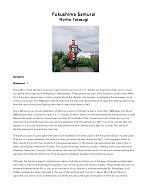
The Samurai of Fukushima / Portraits
Noriko Takasugi / Le Pictorium
LePictorium_0201745.pdf
The Samurais of Fukushima by Noriko Takasugi
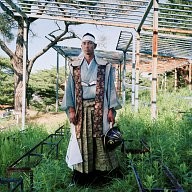
The Fukushima samurais / Portraits
Noriko Takasugi / Le Pictorium
LePictorium_0142648.jpg
Masaki, 30, who used to live in Odaka-ku, decided to stay in the next town “because this is the place where Soma Nomaoi is held”. He took me to the spectator stand in the field where Soma Nomaoi events are held every year. The events were not held here in 2011 because of the high level of radiation exposure. Local people of local company worked hard to decontaminate this area so that events could be held in 2012. Before the disaster, Masaki worked at a manufacturing company located in the town that has been designated as Caution Zone ever since the disaster. He lost his job and decided to get a license to drive large trucks. He was able to find a job at a company that currently mainly does disaster waste processing work or decontamination work (which originally was a engineering and construction company). “We can easily find these type of jobs here now. I needed a job to protect my family and raise my children,” he says.
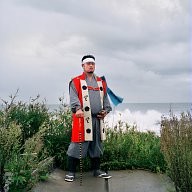
The Fukushima samurais / Portraits
Noriko Takasugi / Le Pictorium
LePictorium_0142649.jpg
Shingo, 34, used to live in Odaka-ku with his wife and children. Their "favorite house" with an ocean view on a hill was washed away 20-meter inland by the tsunami. Downstairs part of the house was completely destroyed. He took me to the side of the house where there used to be a stable and now there is nothing left but the foundation. "We enjoyed watching the ocean from this point," Shingo says, "All the belongings including armor for Soma Nomaoi and two horses that we had taken care of as family were washed away." He let his wife and children move to a neighboring city where the level of radiation exposure is lower while he kept running his own business that removes debris and reconstructs things in Minamisoma city. "I have to stay here and work to raise my family. I'm trying not to think too much about the immediate impact of radiation on our body," says Shingo. His parents living in Tokyo are worried about him.
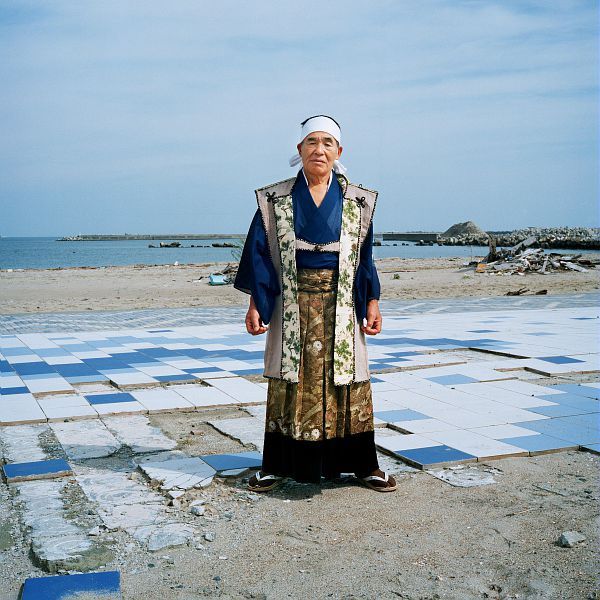
The Fukushima samurais / Portraits
Noriko Takasugi / Le Pictorium
LePictorium_0142650.jpg
"Soma Nomaoi represents life of Japanese Samurai warriors and my way of living. You need that kind of Samurai spirit otherwise you cannot run around wearing that heavy armor in midsummer," says Takakatsu, 68. When it gets closer to Soma Nomaoi, he practices horse racing every morning with his stable mates in this beach where many of his neighbors' bodies were washed up on the beach after the tsunami. Takakatsu's house that was facing the beach was completely destroyed and the some of his horses in his stable next to the house washed away. He piled up dirt on the empty lot to build a new house and lives with his wife here again in the same place. About a dozen of the neighbors who participate in Soma Nomaoi, who need to borrow his horses, help each other living like a family. This place is 45 km from the Fukushima Daiichi nuclear plant, where the level of radiation is lower compared to Minamisoma city.
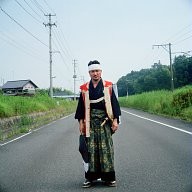
The Fukushima samurais / Portraits
Noriko Takasugi / Le Pictorium
LePictorium_0142651.jpg
Kazuhito, 33, stands in front of his parents' house where he rose up in Odaka-ku. "The tsunami reached just a few hundreds meters away from this place and many people that I knew including Soma Nomaoi friends died," he says. After living at the evacuation center and his wife's cousin's house for several months, he now lives with his wife and children in neighboring prefecture and commutes one hour to the nuclear power plant where he worked before the disaster. He liked horses, especially horse racing, so much that he wanted to become a jockey when he was a teenager. All of his friends acknowledge his superiority in this field. He was happy that Kacchu-keiba (Armed Horse Race), which was canceled in 2011, was held in 2012. He decided not to bring his children to the field where Soma Nomaoi events were held in 2012. "We cannot do anything here if we worry too much about the level of radiation exposure so tend to forget, but we just think it's better for children to stay away from the area. We don't know what the actual impact is though...," he says.
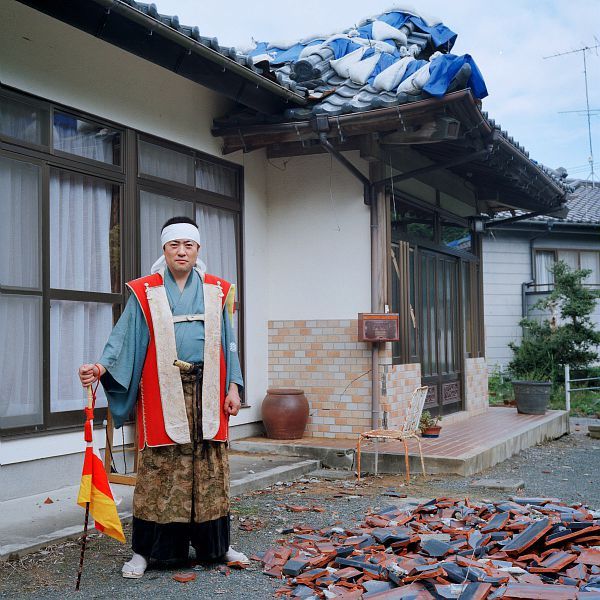
The Fukushima samurais / Portraits
Noriko Takasugi / Le Pictorium
LePictorium_0142652.jpg
Kunihito, 40, stands in front of his parents' house in Odaka-ku where he lived since he was born until the disaster occurred. Roof tiles fell off and walls cracked due to the earthquake, but the house is habitable only if the level of radiation exposure was normal. Currently he lives in a leased housing in the neighboring town with his family and keeps working at the nuclear plant. He grew up watching his grand father being a master of horseback riding. He is happy that Soma Nomaoi is almost back to normal this year in 2012. Kunihito takes pride in the relationship with his Soma Nomaoi he knows since childhood. "I was able to overcome the disaster because of Soma Nomaoi," he says.
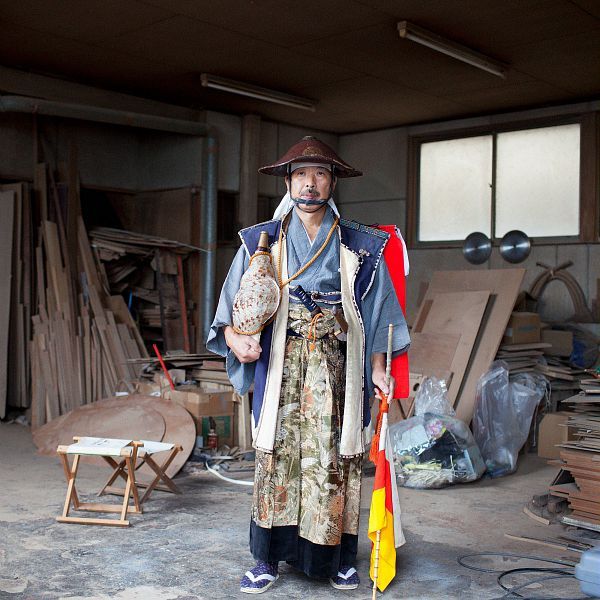
The Fukushima samurais / Portraits
Noriko Takasugi / Le Pictorium
LePictorium_0142653.jpg
Yoshiyuki, 59, took me to his former house that was also his small furniture factory in Odaka-ku where he had lived since he was born and worked locally for more than 35 years. In July 2012, he moved all the equipment from his former home to his new home in another city, where he evacuated to and lives now, to restart the furniture business there. "We might return to Odaka-ku some day but I don't want my children to live here," says Yoshiyuki. "When the disaster occurred, my daughter was in the third trimester of pregnancy. We were trying to determine the best place for her to give birth while moving around for evacuation." He acts as Kaiyaku who blows a conch horn during Soma Nomaoi. "I feel grateful that I have support from my family to participate in Soma Nomaoi, especially last year 2011 and this year 2012 while I was trying to participate during leading evacuation life
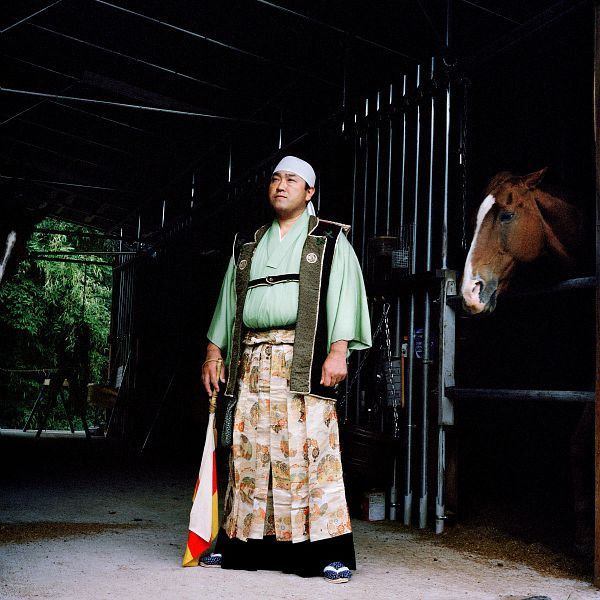
The Fukushima samurais / Portraits
Noriko Takasugi / Le Pictorium
LePictorium_0142654.jpg
Hironobu, 44, took me to a horse stable built by him and his family members after the disaster. Before the disaster, he used to run a youth horse club. Masaki and Kazuhito acquired horse-riding skills at that club to become Nomaoi Samurai warriors. Currently he is taking care of about 10 horses, including the horses that lost their owners and stables due to the disaster that he adopted, in a new stable with his family. He wakes up early to take care of the horses before going to work, and after returning home, cleans the stable and feeds the horses. "It's tough. I can't do it if I don't love horses," he says. Hironobu used to live in Odaka-ku with his family and his parents, who all are Nomaoi Samurai warriors. His children and parents evacuated to his brother's place in a neighboring city where there is little impact of radiation. His wife and he live in leased housing in the neighboring town of Odaka-ku where his works is. "It's been hard for me that I can only see my children during the weekends," says Hironobu.
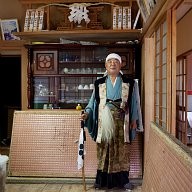
The Fukushima samurais / Portraits
Noriko Takasugi / Le Pictorium
LePictorium_0142655.jpg
I used to stand in front of this kamidana (a household altar) sacred to Odaka Shrine and pray every morning when we were living here before the disaster," says Kunio, 65. Standing solemnly in front of kamidana with gratitude as part of his daily routine was such a precious and calm moment for him. I'm very proud that all of my three sons participated in Soma Nomaoi. I'm deeply touched by the fact that we keep holding Soma Nomaoi trying to overcome the difficulties we faced after the disaster." He still remembers when he received an enthusiastic round of applause from the crowd at Japan Festival held in London back in 1991 when he dressed as samurai with others in front of the Tower of London. He felt connected with the English, many of who love horse riding. "At a dinner reception, I drank the water in the finger bowl by mistake. I thought it was water to drink," he gave big laugh.
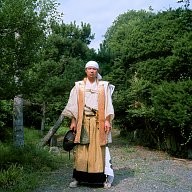
The Fukushima samurais / Portraits
Noriko Takasugi / Le Pictorium
LePictorium_0142656.jpg
Akihito Sato, 38, stands in the garden of his parents' house in Odaka-ku. All of his armor and horse gears for Soma Nomaoi are kept at his parents’ house together with those of his brothers, Kazuhito and Kunihito, and his father Kunio. "My friends and family members are all connected through Soma Nomaoi. Soma Nomaoi often helps to smooth the connection at workplace too," says Akihito. His commitment to Soma Nomaoi comes from his desire to "do it in a cool way" which is to show your ”Rectitude (?)” or Justice, ”Courage (?)” and The spirit of Bearing (?)”, ”Benevolence (?)” and the Feeling of Distress, “Politeness (?)” , “sincerity (?)”, ”Honour (?)” , and ”The Duty of Loyalty (?)”, which from Bushido spirits, subtly to others. Akihito takes pride in the relationship with his Soma Nomaoi mates that he grew up together from very young age. "I was able to overcome the disaster because of Soma Nomaoi," says Sato.
He started his own construction business long time before the disaster. Currently he is busy with nuclear plant related jobs such as scaffolding for decontamination work. He now lives by himself in a leased housing in Minamisoma city because of the work situation having his wife and two children evacuated to another city in Fukushima.
He started his own construction business long time before the disaster. Currently he is busy with nuclear plant related jobs such as scaffolding for decontamination work. He now lives by himself in a leased housing in Minamisoma city because of the work situation having his wife and two children evacuated to another city in Fukushima.
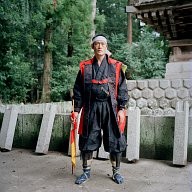
The Fukushima samurais / Portraits
Noriko Takasugi / Le Pictorium
LePictorium_0142657.jpg
"Ever since I was born, Odaka shrine was always there for me at important stages of my life," says Yoshimitsu, 48. He chooses Odaka shrine without hesitation as an important and emotional place in Odaka-ku for him. "I came here to celebrate Seven-Five-Three Festival (a festival to celebrate children's growth and to pray for their future good health) and enrollment ceremonies, or to pray for success with my examinations. I even came here on my first date. And of course, Soma Nomaoi starts from Odaka Shrine every year," he says. He used to live in a house in Odaka-ku close to the Shrine, but now lives in a leased apartment in the neighboring next town with his family. In the past nine years, he has been serving as an executive director for a committee of Soma Nomaoi. "Soma Nomaoi is something that builds ties among people and that makes me grow. It is something that I am proud of being involved in from the bottom of my heart".

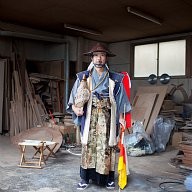 The Fukushima samurais / Portraits / Noriko Takasugi
The Fukushima samurais / Portraits / Noriko Takasugi